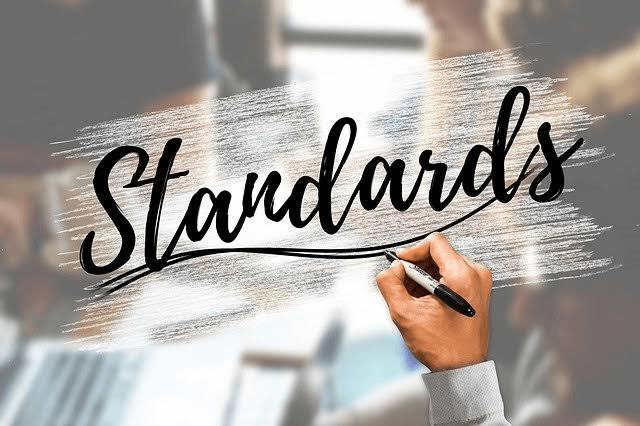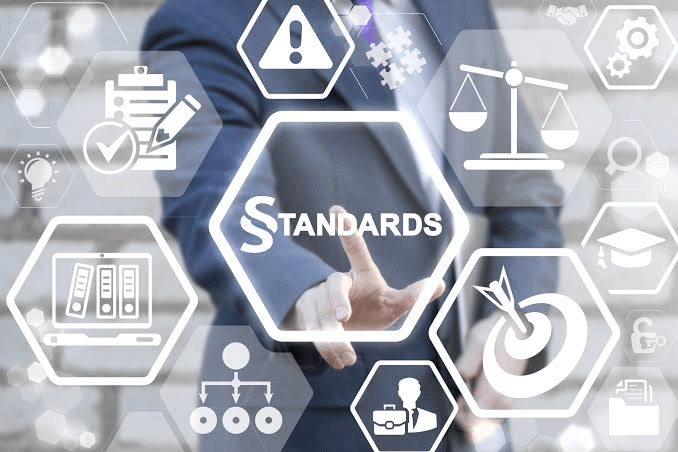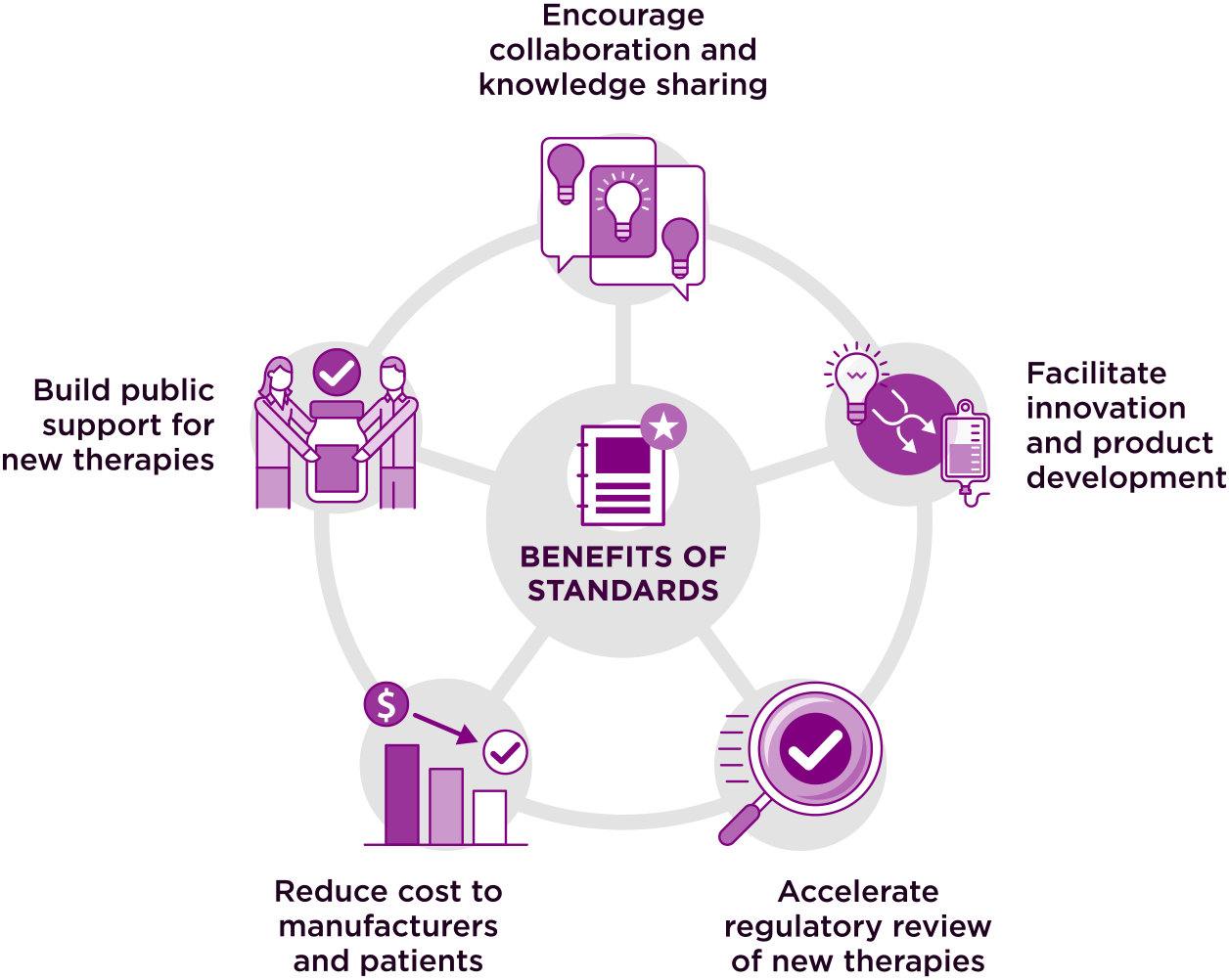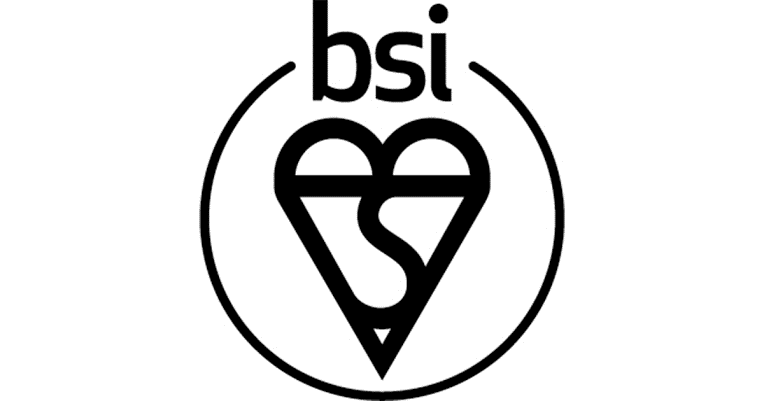Standard DefinitionSimply said, standard refers to what is anticipated to occur given the existing or predicted circumstances. Another definition of a standard is anything that has been predetermined or planned, and management desires that actual results correspond to standards. The use of standards by management to monitor and assess the effectiveness of company operations is one of their key quantitative tools. Yet, a lot depends on the criteria that are chosen when deciding on control measures and performance evaluation. 
All standards serve the same fundamental objective, which is to lay forth accepted guidelines or standards so that anyone using them can draw valid conclusions about a certain good, service, or procedure. Yet, they can differ in these two key areas:
Some standards' form of agreement is more or less counsel and guidance, while others are far more prescriptive and lay out certain conditions that must be completed if a user wants to assert that their product complies with the standard. Meaning Of StandardA standard is, in essence, an accepted procedure for doing anything. Standards can apply to a wide range of tasks carried out by businesses and accessed by their clients, whether they are for producing goods, managing processes, providing services, or supplying resources. Standards are the condensed knowledge of those with subject-matter expertise and a familiarity with the requirements of the companies they represent, including producers, vendors, purchasers, consumers, trade groups, users, and regulators. Standards are learned things. They are potent instruments that can promote productivity growth and innovation. They may boost an organization's productivity and improve the comfort, security, and health of people's daily life. Who Uses StandardsStandards are used by organizations of all kinds, including small firms, big corporations, and governments, to compete more successfully. One of the greatest methods for firms that operate internationally to demonstrate quality, compatibility, and consistency is to use international standards. This also helps establish a common language for commerce. Utilizing standards helps government organizations in various ways, from simplifying their internal operations to assisting in the creation of new regulatory frameworks. 
Small businesses are aware that they must put in more effort to distinguish themselves from bigger corporations. Using standards may be beneficial for a variety of purposes, including monitoring and enhancing product quality, strengthening the security of your IT infrastructure, putting in place a procedure for handling complaints, vetting job candidates, and providing additional peace of mind to consumers. The Benefits of StandardsFor businesses of all sizes, using standards may provide a set of potent marketing and business tools. They enable you to show the clients the quality of what you do, and they aid in your understanding of how to incorporate best practices into your company. You can use them to enhance performance and manage the risks you face while operating in more effective and sustainable ways. 
The Purpose of StandardsStandards address a wide range of topics, including nanotechnology, energy management, health, and safety. They might be quite specialized, such to a certain class of goods, or very generic, like management procedures. A standard's purpose is to give individuals a solid foundation on which to base their expectations of a good or service. This facilitates: facilitate trade provide framework for achieving efficiencies enhance consumer protection and confidence Using standards in organizations
Categories of StandardsThe majority of standards fall into several categories depending on the task they must do. The most prevalent of them is the Specification, a highly prescriptive norm that outlines precise absolute criteria. It is frequently employed in applications that call for a high level of confidence and certainty on the part of the user community, such as product safety. Code of Practice: Codes of practice advocate for sound, ethical practices being carried out by knowledgeable, ethical practitioners today. Although they provide trustworthy suggestive standards, they are written to allow for some application freedom. They are frequently employed in the building and civil engineering sectors. 
Methods: The agreed-upon means of measuring, testing, or defining what is consistently reproducible under many conditions and locations is laid out in methods, which are also very prescriptive. A set of terminology and definitions used to help standardize language usage in a certain area or field is known as a vocabulary. Guides: In order to provide less directive guidance that reflects the most recent thinking and actions among specialists in a certain field, guides are issued. Forms Of StandardI. Basic StandardThey are requirements set up taking into account variables that are fundamental in nature and don't vary over time. They are adjusted only when the company operations change dramatically and have an impact on the most fundamental underpinnings of the corporation and the nature of business. These criteria make it easier to compare corporate activities over a longer time span. Not only are actual achievements but also now anticipated results evaluated using fundamental standards (current standards). It is possible to state that fundamental standards serve as a baseline for additional standards. Basic standards are rarely employed since they cannot be used to analyze variation over short time periods because they are not updated to reflect current conditions. 
II. Normal StandardsThese are the kinds of requirements that one might anticipate under typical conditions. When there are no unforeseen variations, the term "normal" refers to the typical operating circumstances of the firm (either favourable or unfavourable). Even with typical standards, reality cannot be fully foreseen with all of its fluctuations in advance, therefore they are more theoretical in character. Also, conditions may alter in a way that makes managers less able to control things that they once believed to be under their control. So, in the commercial world of today, it has a restricted use. Normal standards, on the other hand, serve as a suitable yardstick that symbolizes difficult but attainable outcomes and may be utilized by management in such a basic setting that is not prone to significant variations. III. Current StandardsThese criteria are an accurate reflection of the market environment today. Since they are the most applicable standards to utilize for control purposes, they are often used and typically of a short duration. These criteria indicate the status that firm is now reaching or must achieve. IV. Attainable standards / Expected standardsThese standards reflect what can be accomplished with the existing setup in place and assuming the current circumstances hold true. They are based on current situations and circumstances. Although the standards now in place may be lower or simpler than those that are intended, smart managers constantly strive to employ every available resource. It implies that the potential of a firm may be represented by attainable criteria. For instance, a machine may operate for 5,000 hours but is only anticipated to operate for 4,000. Hence, the achievable standard is 5,000 hours, as opposed to the present standard of 4,000 hours. These criteria are helpful because they aid management in performance analysis and timely utilization of untapped potential. 
V. Theoretical standards or ideal standardsThese standards are intended to depict how company operations should be when everything is operating at its best capacity and in harmony. Rather than being used for measuring short-term performance, these criteria are indicative of long-term objectives. Yet as technology and innovations improve, even the ideal standards gradually become accessible. But with each stride ahead and each question resolved, new problems and complications arise, and it's human nature to always widen the path forward with each success. Ideal standards are therefore not intended to be attained but rather to serve as a beacon. Types Of StandardsBritish StandardsBritish Standard is the designation given to the majority of standards that BSI publishes. This shows that the procedures outlined in BS 0, A standard for standards, were used to establish them. A British Standard has been primarily distinguished by the fact that it is created through a process that includes: A Committee: a broadly representative team of subject matter experts chosen by organizations with an interest in the standard's content and implementation Consultation: making a draft accessible for review and feedback to anybody who may be interested. Consensus: the idea that rather than relying on a majority vote, the committee should reach a broad understanding on the standard's substance among as many members as feasible. 
This procedure strengthens the standard's authority and makes it more likely that a very broad variety of individuals who might be interested in using it would accept it. British Standards may be created fully within the UK by BSI committees, or, in most situations, they are adoptions of international standards created using quite similar procedures and nearly invariably with a significant amount of UK participation. Publicly Available Specification (PAS)A PAS and a British Standard are comparable in many ways. Nonetheless, it is constantly created in response to an inquiry from an outside sponsor who pays for a time- and resource-consuming procedure, enabling it to be created and released fast to meet an urgent business requirement. Other StandardsSome standards don't require the same level of agreement and public input. They are frequently a work in progress and may undergo further improvement based on knowledge obtained over the first year or two of use. These include standard-type papers that fall under the umbrella category of Published Documents but don't have the same status as British Standards (PD). 
In A NutshellStandard, to put it simply, is a measurement of what is predicted to happen in the given situation or one that is anticipated. Another definition of a standard is anything that has been predetermined or planned, and management desires that actual results correspond to standards. Standards are a crucial quantitative weapon in the management's arsenal for monitoring and evaluating the effectiveness of corporate operations. Yet, a lot depends on the criteria that are chosen when deciding on control measures and performance evaluation. 
It's not like one standard is always excellent and the other is always terrible in this situation. Nothing is absolute. Determining which standard is appropriate for a certain circumstance and which can deliver pertinent and trustworthy information that is also conveniently accessible and applicable is a question of scenario and needs judgment. Hence, the type of standard that is appropriate for usage relies on the requirements that form the foundation of that decision. For instance, it will be better if management adheres to current standards in times of financial or environmental crises than employing achievable criteria since even upholding current standards might be challenging at times. On the other hand, if management believes that the situation is favorable and that the resources on hand can handle a task, it could convert from ideal standards to more achievable or even typical standards. Ideal standards may serve to inspire employees to provide their best effort.
Next TopicUnemployment Definition
|
 For Videos Join Our Youtube Channel: Join Now
For Videos Join Our Youtube Channel: Join Now
Feedback
- Send your Feedback to [email protected]
Help Others, Please Share









